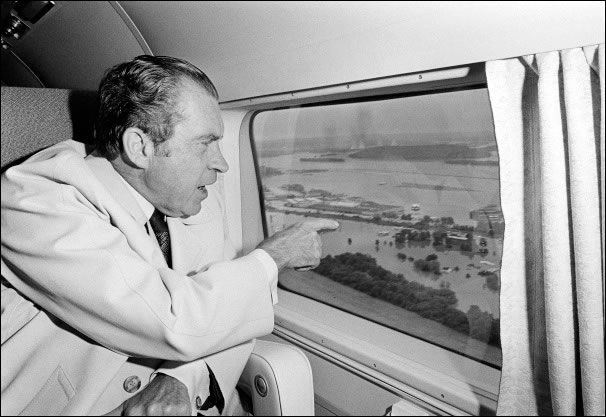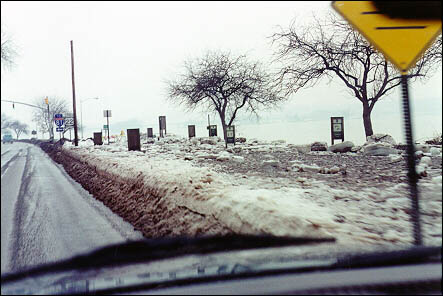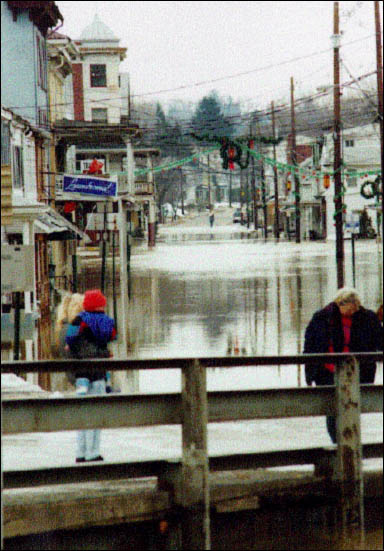After one of the driest July's in Pennsylvania history, two powerful hurricanes moved up the eastern seaboard in quick succession in August 1955, bringing the most destructive flooding in history to a large part of eastern Pennsylvania. Hurricane Connie was the first storm to hit the region on August 12-13. The storm brought a little more than just drought busting rainfall when 6-10 inches of rain fell across the eastern portions of the state. Flooding, while not as widespread and severe as the pending storm, brought smaller rivers and streams out of their banks in Buck, Chester and Lancaster counties. Two fatalities were reported from automobiles being swept into the fast moving streams in this area. The heavy rains from Hurricane Connie were just priming the pump for the next big rain maker associated with Hurricane Diane.
Just a few days after the flooding from Connie subsided, Hurricane Diane made landfall near Wilmington, NC, on August 17. The storm moved inland into the central Appalachian foothills before moving north into Pennsylvania on August 18. The deep tropical moisture met up with an existing area low pressure over the eastern half of the state, producing torrential rains. With soils moist from the heavy rains from Connie and streams already flowing high, flooding quickly increased in severity during the evening hours on the 18th. Rainfall estimated between 7 to 9 inches fell in a 6-hour period, with the heaviest amounts centered over the mountainous portions of northeast Pennsylvania. These small mountain creeks produced destructive flooding and led to several deadly small dam failures, such as the one at Camp Davis, Brodhead Creek, near East Stroudsburg. In a truly horrific event, 47 campers, mostly children, were huddled in a building that was rapidly flooded and dislodged, into the roaring flood waters. Hours later, only 7 of the campers were found alive.
The deadly flooding continued downstream in Stroudsburg and East Stroudsburg, where 78 lives were lost in Monroe and Pike counties. Further north, in Wayne County, a dam failure resulted in two lives lost. The Lackawanna River experienced its worst flooding in history; downtown Scranton was under water. All of this water emptied into the Delaware River, producing severe flooding. The Portland-Columbia (New Jersey) covered bridge, then the longest wooden bridge in the country, which had withstood several major floods, collapsed after water levels rose over the bridge. The Lehigh Valley suffered major flooding, and Easton was completely underwater and cut off by the high waters. The death toll from the flooding associated with Hurricane Diane in Pennsylvania was 113, with property damage estimated to be at least $70 million.|
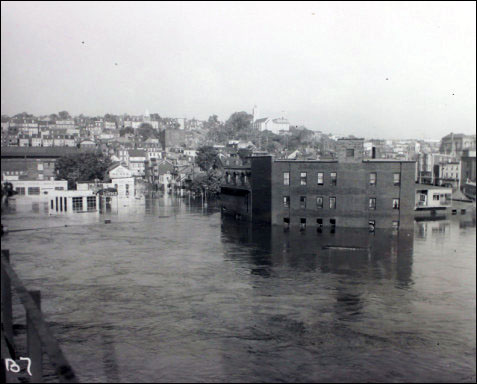 Flooding in Easton, PA, August 20, 1955
Flooding in Easton, PA, August 20, 1955
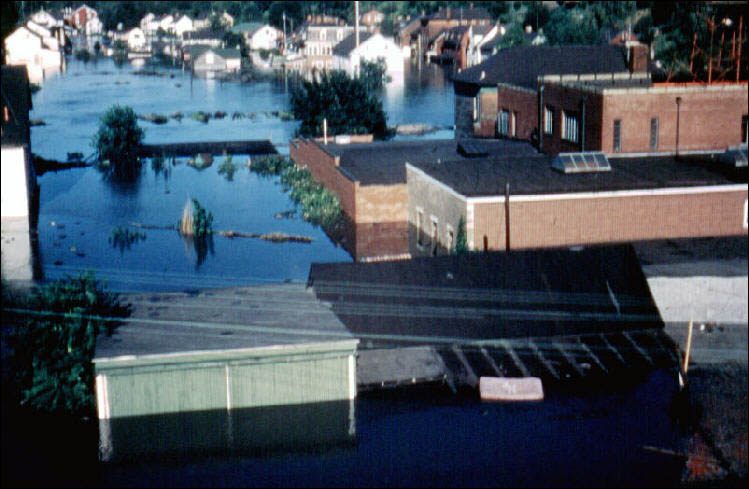 Flooding in Easton, PA, August 20, 1955
Flooding in Easton, PA, August 20, 1955
Learn More:

